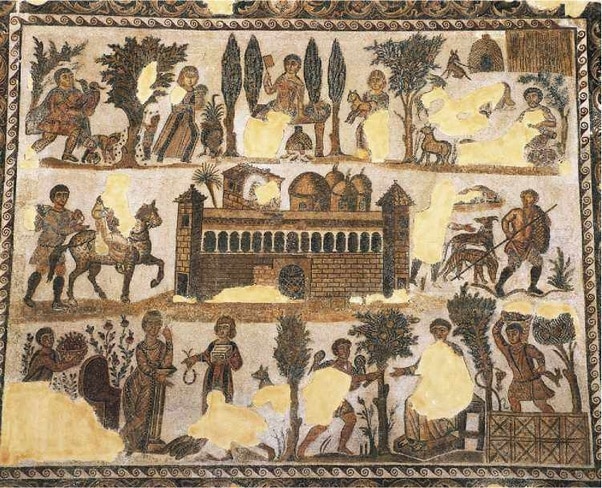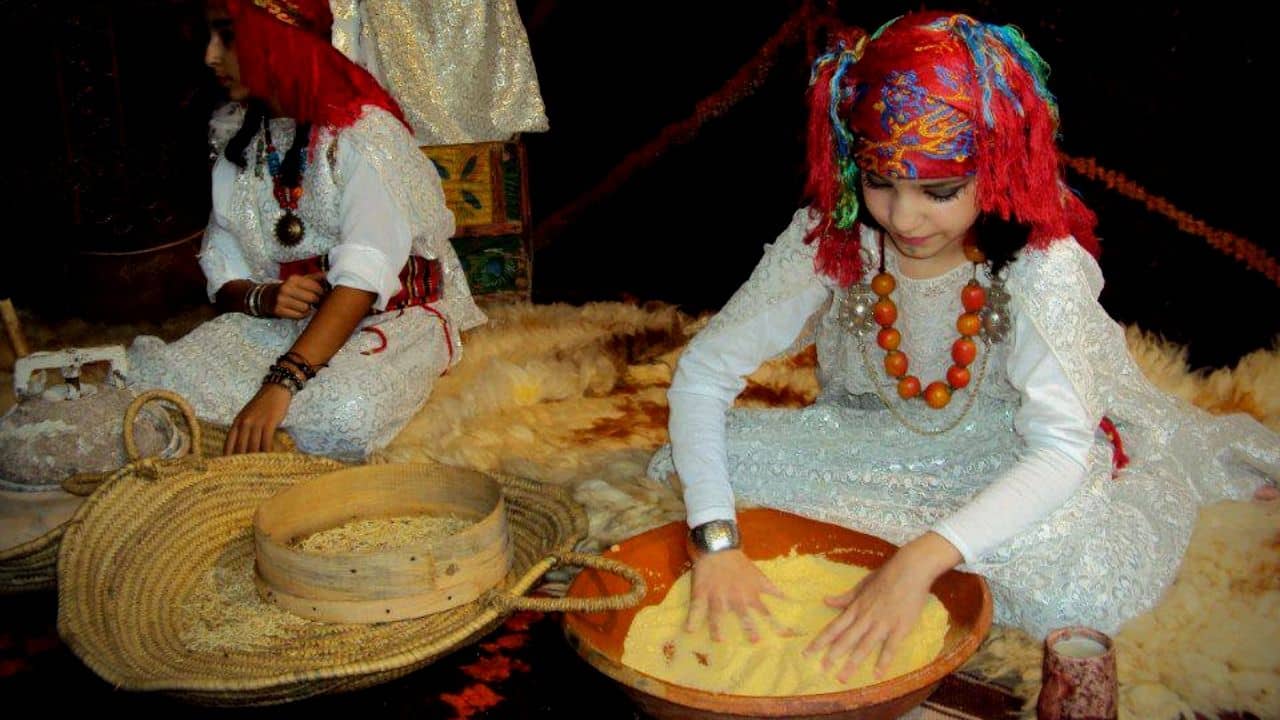Since couscous has now been officially recognized by UNESCO as world intangible cultural heritage, after delegates of four countries of North Africa, known as “Tamazgha” at the Amazigh people, (Algeria, Morocco, Tunisia and Mauritania) brought up the matter to this international body, we wish to publish again an article written by Michael Peyron on this ancestral food which is emblematic of North Africa.
“It has been an Amazigh dish for centuries in North Africa. Julius Caesar, St. Augustin and some Pharaohs have eaten it. It has been and remains the fundamental food of North Africans (people of Numidia), Christians, Jews, pagans, polytheists and others, all except Muslims.
Couscous was not imported to France by those who were given the nickname of “Pieds-Noirs” (black feet), i.e. European colonizers of North Africa, because it already was a dish which the first North Africans who came to France to work or fight (for instance in WWI, 1914-1918) had already introduced to the French people. Pieds-Noirs made this food more important and popular. As other types of food, couscous became part of a French ordinary diet.

Thousands of years ago, Numidia produced wheat and remained the granary of the Roman Empire for seven centuries. Here I must remind those who are not familiar with North African history that five Roman Emperors were of Amazigh (Berber) origins and that they brought to Rome their cooks and traditional recipes.
There is no “true” couscous. The grain of wheat is common to all preparations of the dish and each cook puts in them what he or she wants, according to availability, means and regions. Fishermen add fish, farmers chicken, and in the desert plants such as purslane are used. Wealthy Pied Noir farmers added to it a variety of ingredients to achieve the famous “Royal” recipe. Couscous served with meatballs for Shabbat is delicious.
So, in short, the couscous adopted by French gastronomy remains and shall remain an AMAZIGH dish (Berber, Kabyle, Chaoui, Chleuh…) and has never been Arabic. You will not find it in Saudi Arabia where the Berber word “Kouskous” means “vagina” in their language. Imagine a Saudi ordering a vagina!
Let me remind you again that North Africa is not a part of the Arab but rather an Arabized region.
In conclusion, I must state that the Oriental or Arabic couscous which includes merguez sausages, an item which supposedly makes it “oriental” (and Muslim) is a monumental misnomer. Merguez sausages were created by migrants from the Alsace-Lorraine region of France after its takeover by Germans in 1870.
Those migrants were granted some land on the high plateau of Algeria and it was those colonizers who created sausages with the meat of sheep, at the time quite numerous. So, there is nothing Oriental about the merguez sausage, its invention or even less its geographical origin. There is no tradition of merguez in Saudi Arabia or anywhere in Muslim countries of the Middle East. It is purely and simply an Alsatian creation!
You should know that. Bon Appétit!”
Original text written in French by Professor Michael Peyron, specialist in the field of Berber language, literature and culture, translated by Helene E. Hagan, as requested by Moroccan Anthropologist Rachid Raha of Amadalpress in Morocco, which published it.

















